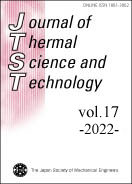17 巻, 2 号
Special Issue of The 11th International Symposium on Solar Energy and Efficient Energy Usage (11th SOLARIS 2021)
選択された号の論文の6件中1~6を表示しています
- |<
- <
- 1
- >
- >|
Special Issue of The 11th International Symposium on Solar Energy and Efficient Energy Usage (11th SOLARIS 2021)
-
2022 年 17 巻 2 号 p. 22preface1
発行日: 2022年
公開日: 2022/05/18
PDF形式でダウンロード (698K) -
2022 年 17 巻 2 号 p. 22-00051
発行日: 2022年
公開日: 2022/05/18
[早期公開] 公開日: 2022/04/11PDF形式でダウンロード (1229K) -
2022 年 17 巻 2 号 p. 22-00057
発行日: 2022年
公開日: 2022/05/18
[早期公開] 公開日: 2022/04/07PDF形式でダウンロード (1620K) -
2022 年 17 巻 2 号 p. 22-00058
発行日: 2022年
公開日: 2022/05/18
[早期公開] 公開日: 2022/04/28PDF形式でダウンロード (2075K) -
2022 年 17 巻 2 号 p. 22-00061
発行日: 2022年
公開日: 2022/05/18
[早期公開] 公開日: 2022/03/13PDF形式でダウンロード (1520K) -
2022 年 17 巻 2 号 p. 22-00076
発行日: 2022年
公開日: 2022/05/18
[早期公開] 公開日: 2022/04/28PDF形式でダウンロード (4512K)
- |<
- <
- 1
- >
- >|
